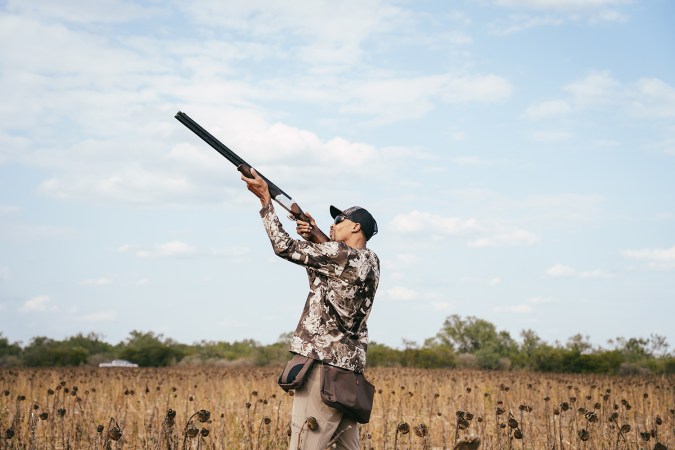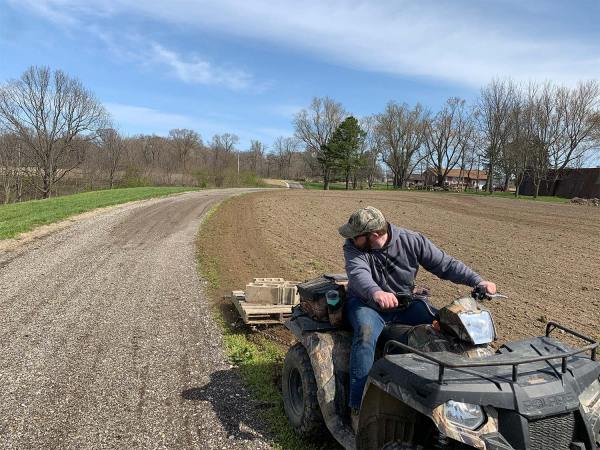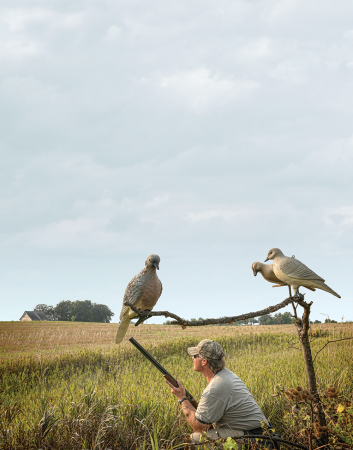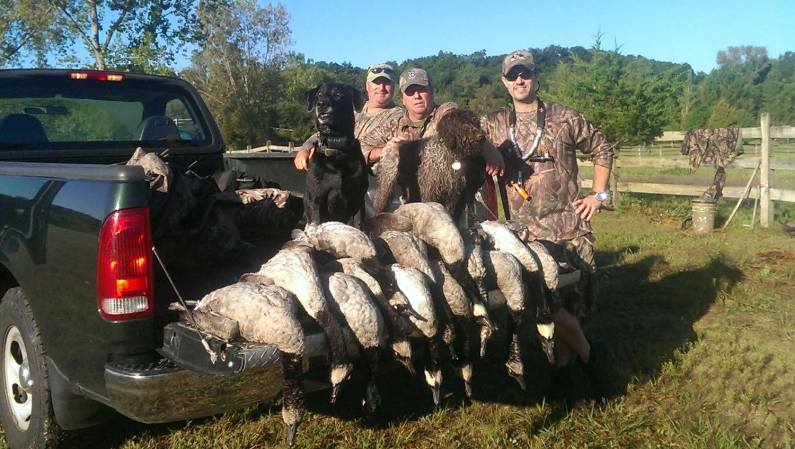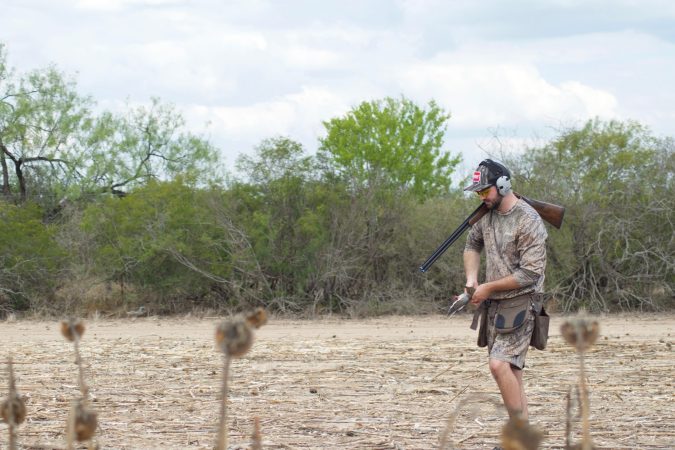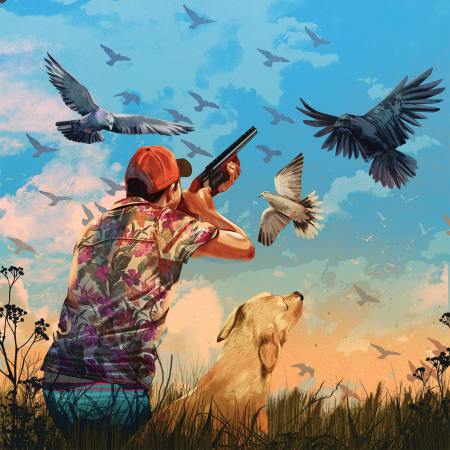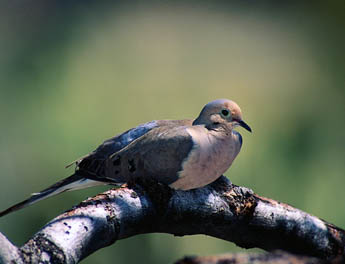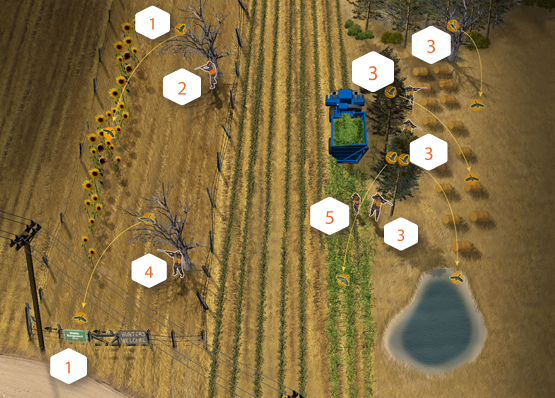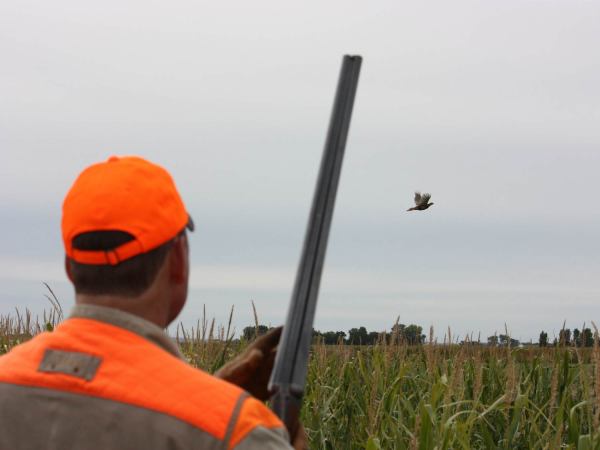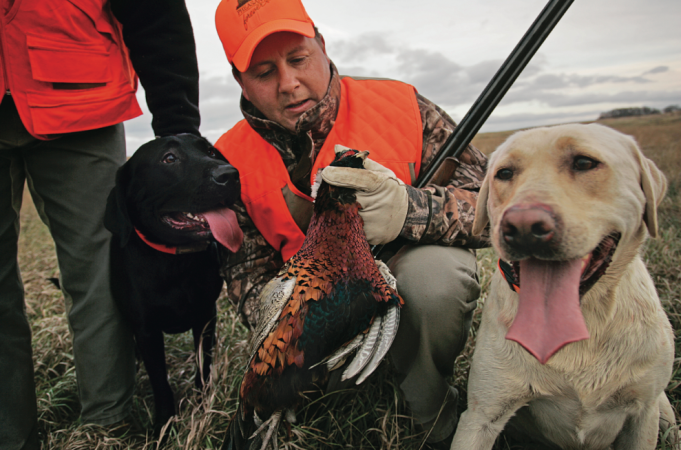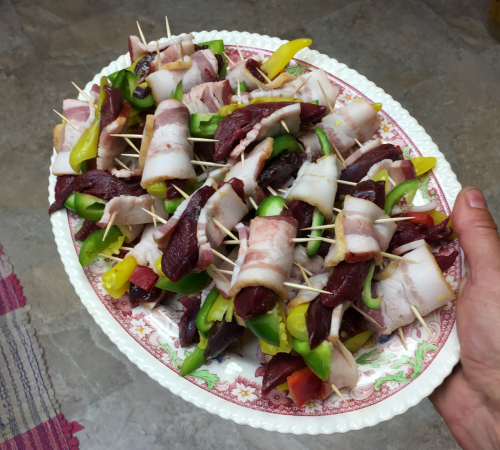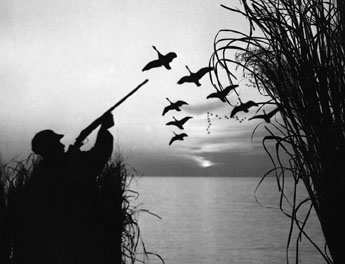The annual meeting of the Southwest Missouri Dove Hunting Safari Club was only sparsely attended last year. There was just Bill Toole and me. When the season opened, things like military service and earning a living kind of got in the way for some members.
The meeting was called to order in a cut cornfield that should have been lousy with birds, but there were fewer than expected in what we had hoped would be a hot setup. It seemed that all of the area was one huge expanse of cut corn, and the doves were scattered from hell to Blodgett.
“And just think,” Bill said, “it all goes downhill from here.”
Actually, it wasn’t all that bad. While it took us a bit longer than usual and we had to relocate, we both took limits and enjoyed an altogether fine opening day. The limits weren’t so much the result of any one thing we did, but of a combination of factors. Regardless of where you live, you should be able to repeat the same winning combination for dove season.
1 SCOUT FOR HUNTING SPOTS
Finding doves and then getting permission from the landowner to hunt is all-important. Toole and I start hunting long before the season opens, but we’re hunting for places that attract doves. In early afternoon, we drive down country roads in agricultural areas looking for birds flying in and out of fields, or roosting on power lines that cross croplands or are adjacent to them. Last year, we had six potential hot spots lined up before opening day. That helped to swing the odds of a good season in our favor. Obtaining permission to hunt the fields took some time, since we don’t live in the area, but we had a shortcut or two.
First, we got to know the conservation officer in the county where we hoped to hunt. Because of the friendly approach we took, he was helpful. We were introduced to several landowners who allow hunting. They, in turn, suggested we contact some other landowners who were hunter-friendly, too. At one farm that looked particularly promising, I drove up to the owner’s house, only to discover that nobody was home.
I had encountered similar situations before, however, and was prepared. I wrote the farmer a note in which I introduced myself as a friend of a friend and asked for permission to hunt on his property. I enclosed a self-addressed, stamped envelope and a permission statement that required only his signature. Permission was granted by return mail a few days later.
On September 1, when our first Missouri hot spot turned out to be less than spectacular, we switched to a nearby cut milo field surrounded by hedges on three sides and a slough on the other. Before moving, we watched several doves making for the field and a few minutes of observation revealed their favorite flight path into it. Bingo; we had a hunt.
2 USE THE RIGHT CHOKE
Many gun experts still swear by a full-choked barrel as the best choice for pass-shooting doves. The key word here is “expert.” It takes an expert to estimate the leads that are necessary for clean dove kills out to 40 yards and beyond, since that’s where the full choke really begins to come into its own.
For example, at 40 yards, the full-choke pattern, in 12-gauge, has opened up to an approximate 45 inches in diameter. A field load of 1 1/8 ounces would put 462 pellets of No. 8 shot in that circle. Sounds good so far. Now let’s make that circle intercept a dove, flying at 65 feet per second (fps), and forget about things like shot stringing for the time-being. Muzzle velocity of the shot charge would be about 1,200 fps. The lead required is roughly 9.3 feet. Whoops! Missed that one, did we? Shoot again. The dove is at 60 yards now. The lead? If you said 15 feet, you shot behind the bird. Don’t feel bad. You’re not alone.
A popular shooting handbook states, “Ninety percent of all game birds, including ducks over decoys, are taken at ranges of thirty yards and under.” At 30 yards the pattern of an improved-cylinder choke is about 50 inches in diameter. That’s at least 60 percent larger than a full-choke pattern at that range. See what’s happening? Suddenly the physical and mental demands on the shooter are far less, presuming he’s using a gun with an improved-cylinder choke. A modified choke might be a happy medium, but an improved-cylinder (or even a skeet) choke is what you need for most applications. The apparent lead needed to hit a bird crossing at 30 yards is only half that of the same bird at 40. Why handicap yourself with a gun that only an expert can shoot well, unless, of course, you are an expert?
As noted, an open choke might not be the best pick in all cases, because sometimes you’ll find yourself stationed in a place where the only shots you’re going to get are at doves passing overhead at least 40 yards away and moving fast. You might need a tighter choke for such occasions, but that’s what choke tubes are for.
3 DRESS FOR SUCCESS
Doves don’t seem to care much about your apparel, unless you’re in bright colors and move around a lot. Then they go the other way, keeping out of range. A lot of dove hunters like to wear camouflage head to toe. Considering that the spot you’re hunting likely has more earth tones than greens, tan might be a better choice. Let background colors be your guide.
I also like to stay in the shade as much as possible. Shade is natural camouflage. Sunlight, glinting off your gun, watch or million-dollar smile, will get you noticed in a hurry. You don’t want that. Even though the dove that sees you will probably keep on coming, it will now be coming with after-burners engaged. Whether it’s really spooked or just plain showing off doesn’t really matter. The only shot you’ll get at a well-informed dove will be one tough son-of-a-gun.
Sun-screening shooting glasses will help conceal your eyes and face when you look up at the sky, but the best reason to wear them is that they will help keep you safe. It would be sad to look up and get an eyeful of someone else’s shot, even when it’s spent and coming from across the field.
Depending on the weather, you might want to wear a camo vest that holds your shells and doves. If it’s hot, a bird belt with suitable pockets will do. Some guys simply walk into a field with a couple of boxes of shells and a bottle of water. They keep their shells and downed doves in a small pile under a shade tree near them, but it limits their mobility.
4 DON’T CHASE AWAY DOVES Birds are most active in early morning or late afternoon, but consider taking it easy and giving the birds a break by ending your hunt by about 5 p.m. If you don’t have a limit by then, too bad. You’ll thank yourself on another day. Doves that have a chance to do some feeding and then go to water will tend to stick around in the neighborhood; those that are constantly harassed during daylight will leave in search of friendlier food sources. Once we’ve hunted a field, we like to let it rest for a few days. And we never shoot near a roost.
5 FIND DOWNED BIRDS
I pass up those tempting doubles nowadays and take only single shots. I do so mainly because I don’t want to fertilize the weeds with dead doves. Not being able to find your birds makes for a tough day in the field. I recall a crisp autumn afternoon when Toole dropped a dove out of an azure sky into a Missouri bean field. There was a cloud of feathers; no bird was ever deader. Toole then marked the spot by hanging his camouflaged hat on a weed and walked concentric circles around it until, at last, he finally found the bird. It was indeed deader than a carp on a riverbank. There was just one thing wrong. Toole lost the hat and never did find it.
Nothing beats a good retriever. A Game Finder is a cheaper alternative, if not as entertaining as a dog. (They start at about $100; 800-459-3463; www.game-finder.com.) The handheld device uses infrared technology to locate downed game by body heat; it can help find anything from a dove to a deer. Or you could use the hat method, but I hope you have better luck with it than my friend did.
6 PICK YOUR PALS WELL
The single most important factor in making or breaking a dove hunt is the companion you are hunting with. I once hunted with an acquaintance who turned out to be a foulmouthed drunk. Once was enough for me. The same goes for people who are too lazy or too stupid to unload their guns when they climb into the cab of my truck. Life is too short as it is to be careless about such things.
I am reminded again of our unusual opening day last year. What really made it extraordinary was the stranger that Bill Toole and I met in that milo field. We hadn’t been hunting long when the new guy parked his pickup and walked across the field toward us. He carried a 12-gauge side-by-side, broken open and unloaded. He told us he was a friend of the landowner and asked if we minded if he joined us in the field for a while.
“Certainly not,” I said, half-expecting him to move in near Bill and me.
“There’s plenty of room for all of us.”
“Thanks” he said. “I’ll set up by the slough, so I won’t crowd you guys.”
He might have been of an age to be cutting college classes–maybe even younger. He was of medium height and clean-shaven. He wore a dark blue T-shirt, blue jeans and a pair of running shoes that looked like they had a few too many miles on them.
His worn hunting vest must have once belonged to an older relative, since he had not yet lived sufficient years to have been responsible for the vest’s antiqued look. The gun that he carried was an old-timer too, but it looked to be pretty well cared for. A little later, I saw him shoot one bird whose trajectory carried it into the slough behind the hunter. I guessed that after losing the dove he would move to another location. Then my attention got diverted.
Much later, a cool east wind fanned the leaves overhead as we cleaned the last of our birds. On the way to the truck, we crossed near the dike of the slough and saw that the young hunter had returned. What a pitiful sight he was, muddy to the knees and wet to the neck. The only thing dry about him was his vest, which he must have removed before going into the water. It lay in the shade, faded and torn, and on it was a single wet dove.
I had only one thing to say to someone so simple, so unsophisticated and just plain dumb enough to wade across a muddy slough and search half an hour for a downed dove: “Bravo, friend, and let me welcome you to the Southwest Missouri Dove Hunting Safari Club.”
QUICK FIX
Fast Decoys You can fashion silhouette dove decoys from corrugated cardboard. Use heavy scissors to cut pieces shaped like doves and spray each with gray paint. Staple the silhouettes to popsicle sticks and stick them into the ground of your dove field at varied angles. Doves approaching from any direction will be able to spot at least some of them and will likely come your way.

